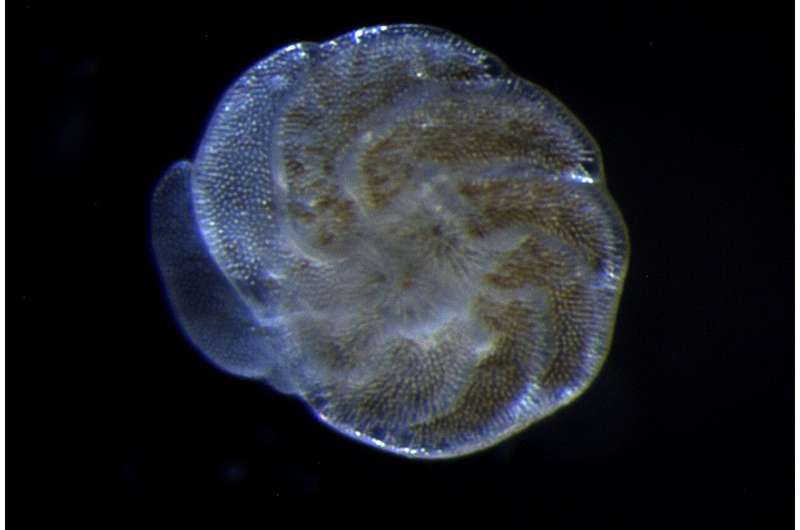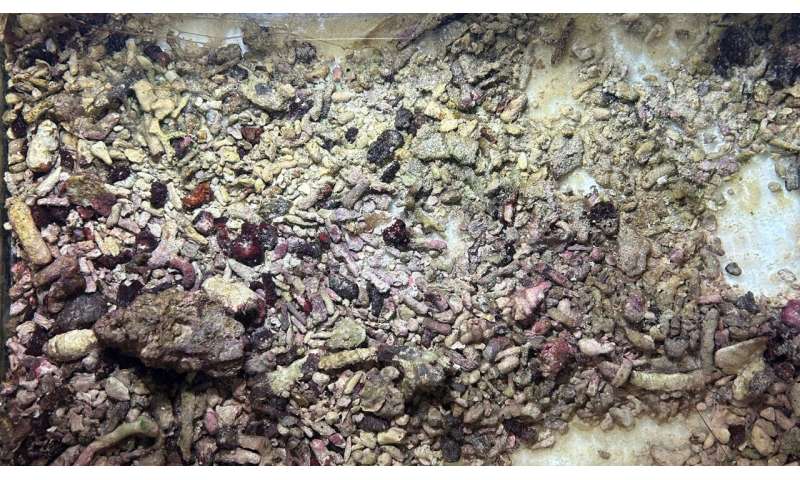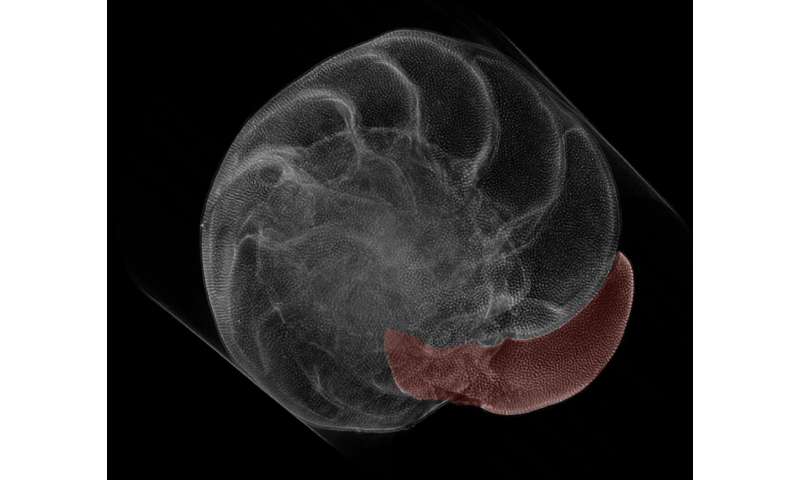This article has been reviewed according to Science X's editorial process and policies. Editors have highlighted the following attributes while ensuring the content's credibility:
fact-checked
trusted source
proofread
Calciferous organisms are a good tool in climate research, says scientist

The fossil calciferous skeletons of single-celled foraminifers are a beautiful history book with information on CO2-levels in the oceans of the distant past.
"But if you want to fully understand that history, you must first understand exactly how these single-celled organisms build their skeletons," says Earth scientist Linda Dämmer in the dissertation she will defend on November 29 at Utrecht University.
Acidity and temperature
Foraminifers, or forams for short, are single-celled organisms that make a tiny shell of calcium carbonate to protect their cell from the outside world. They are not unlike a house and even have windows (foramina in Latin), hence the name. The shells consist not only of calcium carbonate (CaCO3) but also of traces of magnesium.
"The amount of carbonate in the skeletons may reflect the amount of CO2 and the acidity of the ocean at that time," says Dämmer. "In addition, the amount of magnesium can tell a story about the temperature of the seawater. But that is not a simple black and white story," the researcher warns.
Light and dark
The amount of magnesium appears to be related not only to the temperature of the seawater, but also to the amount of daylight, Dämmer discovered during experimental culturing of her forams in the laboratory. If a specimen starts building a new chamber to add to its calcium skeleton at dusk, it will contain more magnesium relative to calcium than in a conspecific, calcifying in continuous daylight at the same temperature.
"So, a simple translation of the amount of magnesium to the temperature in which that organism lived is a simplification of reality," Dämmer says.
-

In their natural habitat, forams live among coral polyps. The forams used in this research are taken from aquariums with material imported from tropical regions. Credit: NIOZ -

A micro scan of a foram from one of Dämmers experiments. The resolution of such scans make it possible to quantify the amount of calcium carbonate (here in red) made by the foram during experiments. Credit: Linda Dämmer, NIOZ.
More foraminifers with more CO2
Some species of foraminifers are likely to benefit from the increasing amount of CO2 in the oceans, that results from the anthropogenic emissions. That growth may well continue until the amount of CO2 in our atmosphere reaches 700 parts per million (in comparison: it is slightly over 400 ppm today). In addition, the acidity of the water will also become too high for these organisms to form calcium skeletons, meaning that even these resilient species will begin to struggle.
Chemical understanding
Dämmer is not primarily interested in the ecological consequences of an increase in one foraminifer or another. "In the food chains in the ocean you're probably not going to notice these changes," she says. "But to understand the complete accounting of CO2 and calcium in the oceans, it is very important to know exactly what these single-celled organisms are doing. In the open oceans, as much as half of the amount of calcium carbonate precipitated consists of these tiny forams. In that respect, they can match coral reefs in other places in the oceans in terms of importance to ocean chemistry."
Prof. Dr. Gert-Jan Reichart (NIOZ/UU), Linda Dämmer's supervisor, states, "Linda's research is part of the NESSC, Netherlands Earth System Science Center, in which researchers from NIOZ, Utrecht University, Radboud University Nijmegen, Vrije Universiteit and Wageningen University & Research are investigating how warm the Earth is becoming as a result of climate change. Comparing seawater temperatures during past periods with high CO2 conditions plays an important role. At NIOZ, there is a lot of experience in growing foraminifers under controlled conditions. In this way, we improve reconstructions of seawater temperatures in the past and thus also improve seawater temperature predictions for the future."
Provided by Royal Netherlands Institute for Sea Research




















